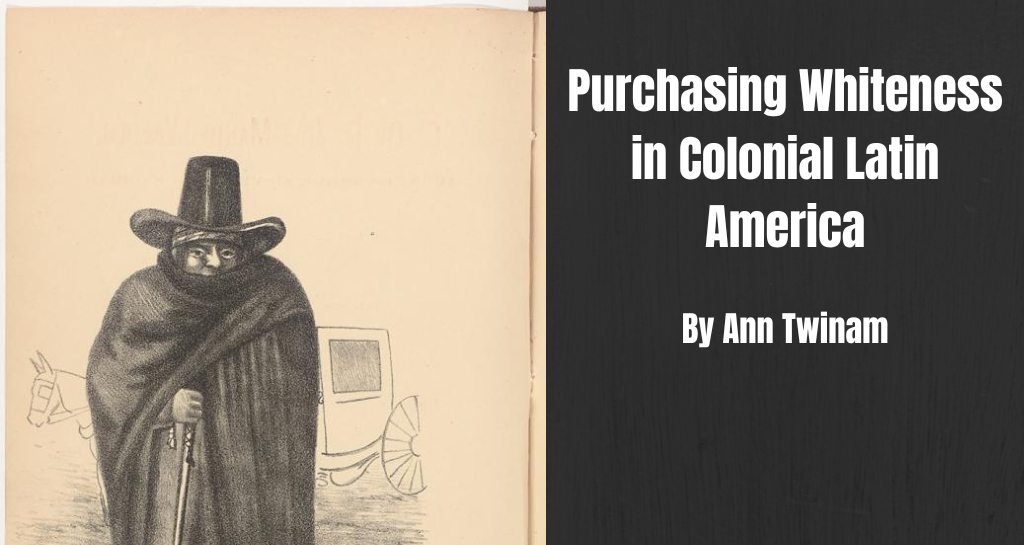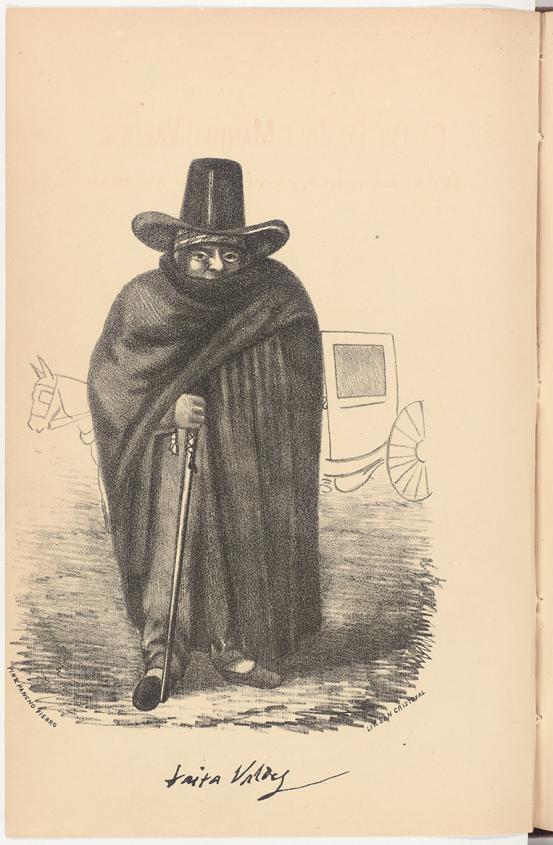
The castas, or mixed race populations, suffered numerous forms of discrimination in colonial Latin America, but in practice pardos and mulatos could still achieve some social mobility. A rare few, by the mid eighteenth century, were able to petition the Spanish crown through a process known as the gracias al sacar, to purchase whiteness.
The accompanying watercolor provides a rare visual of one of those so whitened. Dr José Manuel Valdes was born illegitimate in Lima, Peru, in 1767, the son of a mulata named María and an Indian named Baltasar. Placed in a primary school at the age of three, by the time José was five his teacher concluded that he was so precocious that he needed advanced education. A childless couple subsidized his advanced learning.

José Manuel apprenticed to become a surgeon, for even though his talents would have permitted him to become a physician and receive a doctorate from the university, royal legislation prohibited that he receive these degrees. He found a mentor in the distinguished physician Hipólito Unanue, who promoted the young José Manuel’s career. Unanue practiced in “all the great houses” of Lima, and he introduced José Manuel into elite circles, famously proclaiming, when faced with a difficult case, that his patients should “call José Manuel to come so he can ‘do his witchcraft here.’”
As his practice flourished, José Manuel donated significant proceeds to charity; he continued his education, teaching himself to read French, Italian and English while collecting a notable medical library. Residents of Lima were accustomed to see him on his way to medical calls with the windows of his carriage drawn, so he might read and not be distracted. This was how popular water colorist (costumbrista) and fellow pardo Pancho Fierro portrayed him in this image. It was because José Manuel was “so esteemed in Lima” that the Viceroy, the audiencia and the city council successfully petitioned the Spanish king to whiten him, which permitted him to receive his doctorate, become a physician, teach at the university and serve as the chief medical officer in Lima. His story is just one example of the very different ways that the Spanish world facilitated the mobility of deserving individuals, no matter their race.
Photo Credits:
Lavalle, José Antonio. El Dr. D. José Manuel Valdés. Lima: Torres Aguirre, 1886. (Courtesy of the Latin American pamphlet digital project at Harvard University and the Museo de Arte de Lima)
You may also like:
And Kristie Flannery’s review of Imperial Subjects: Race and Identity in Colonial Latin America